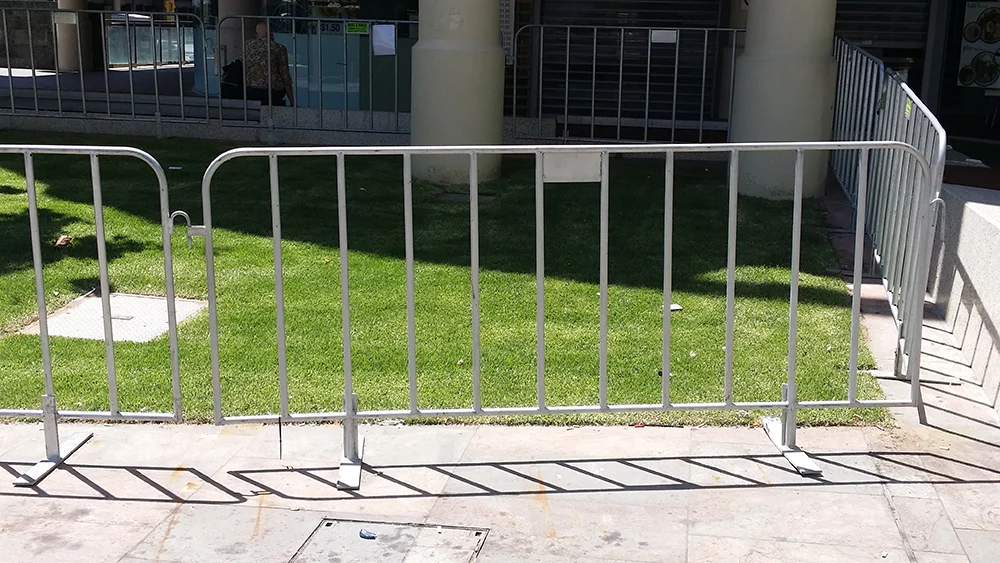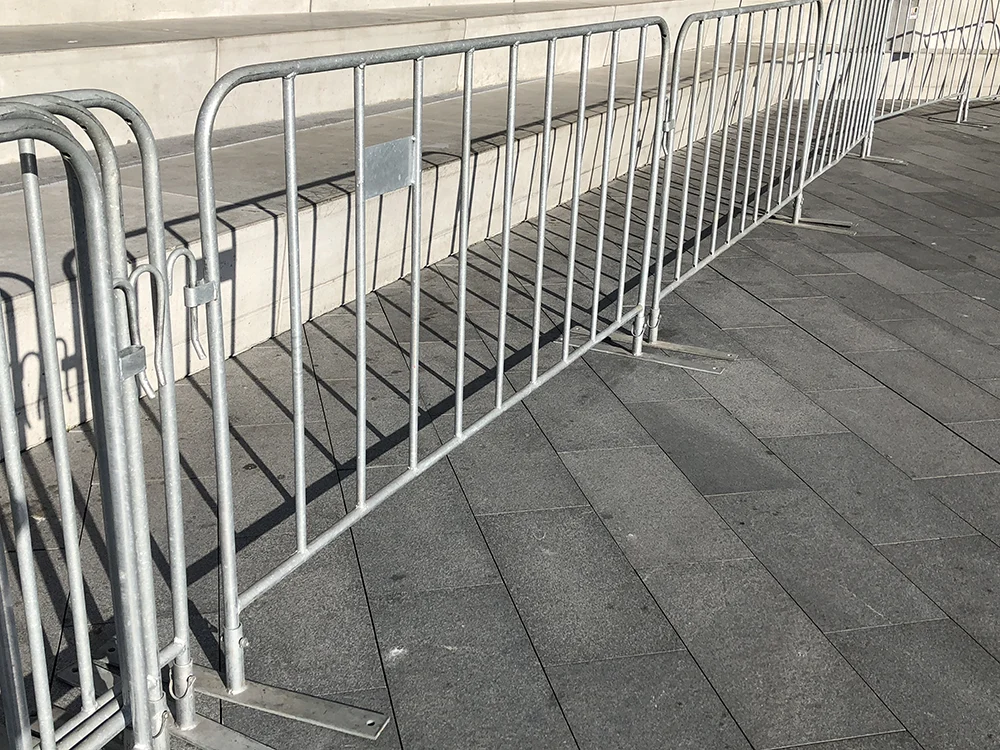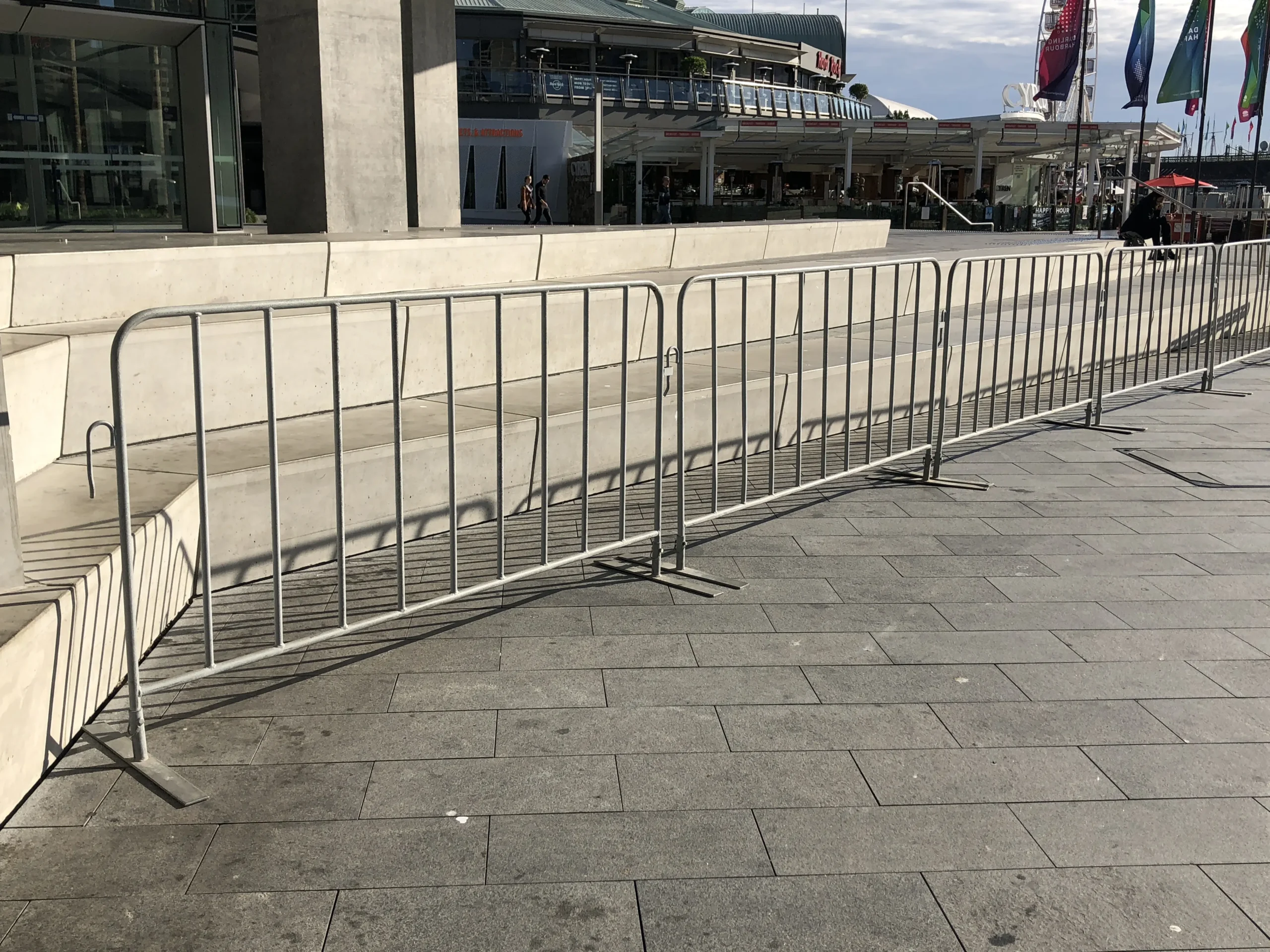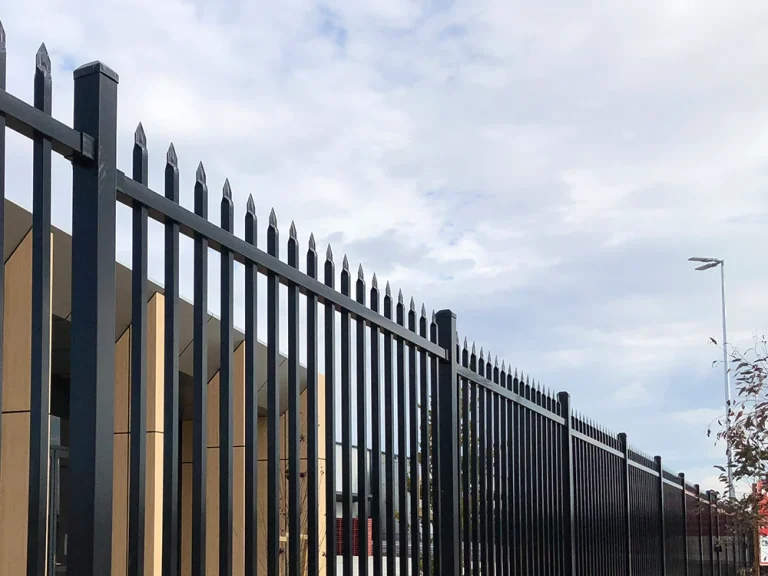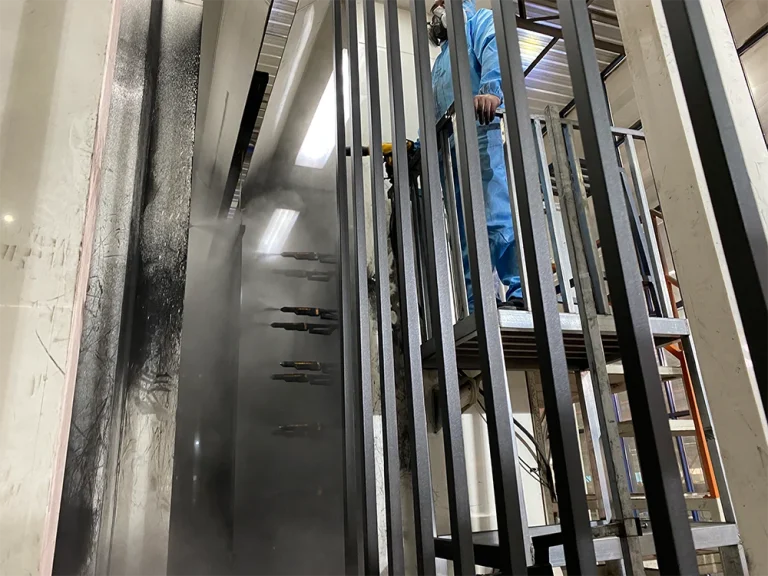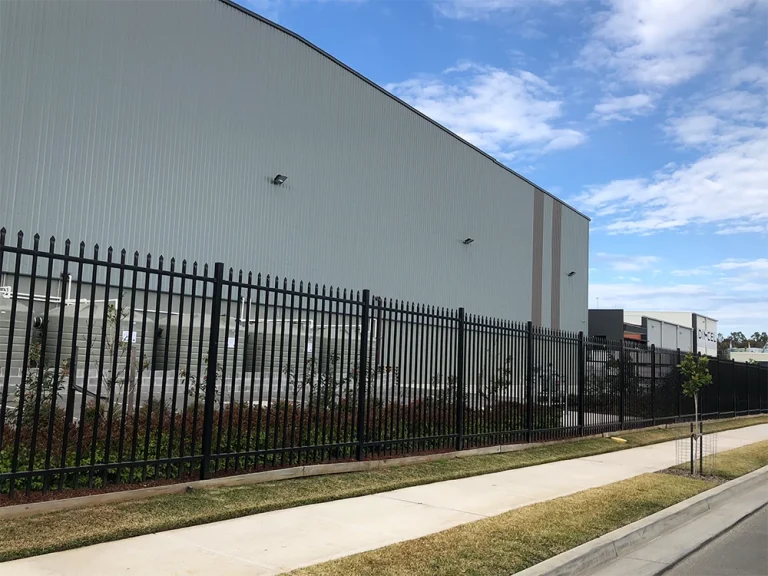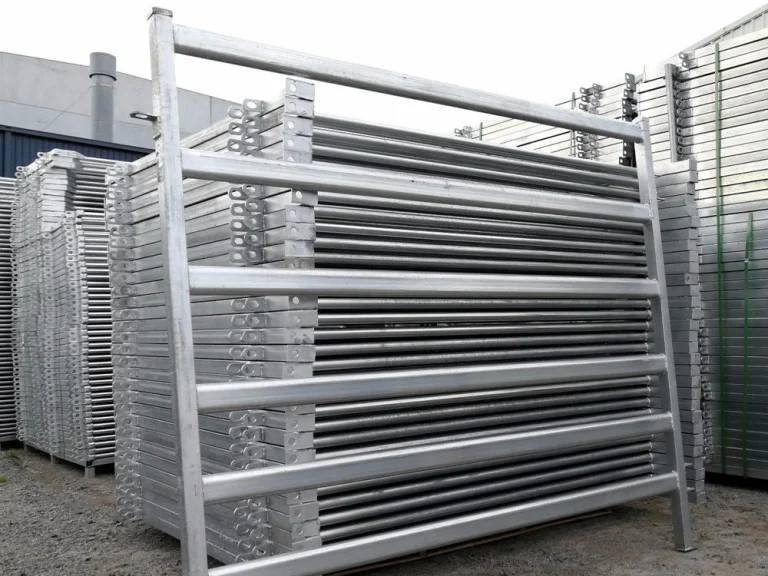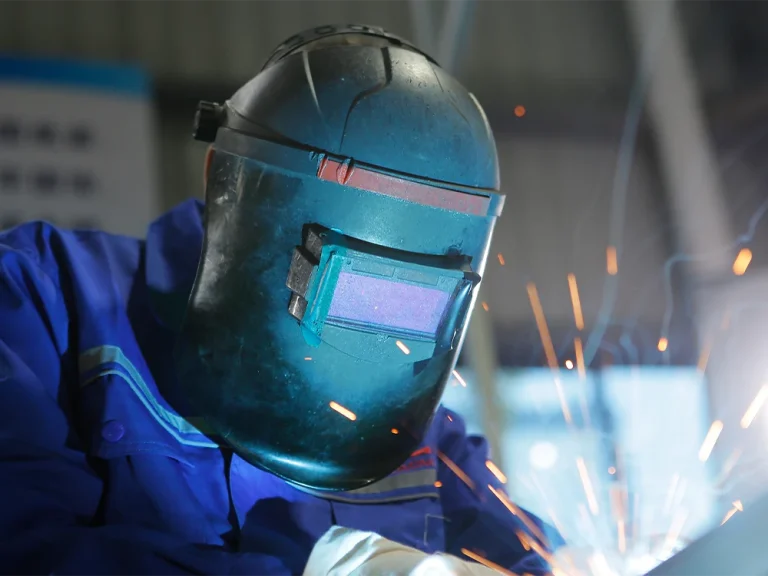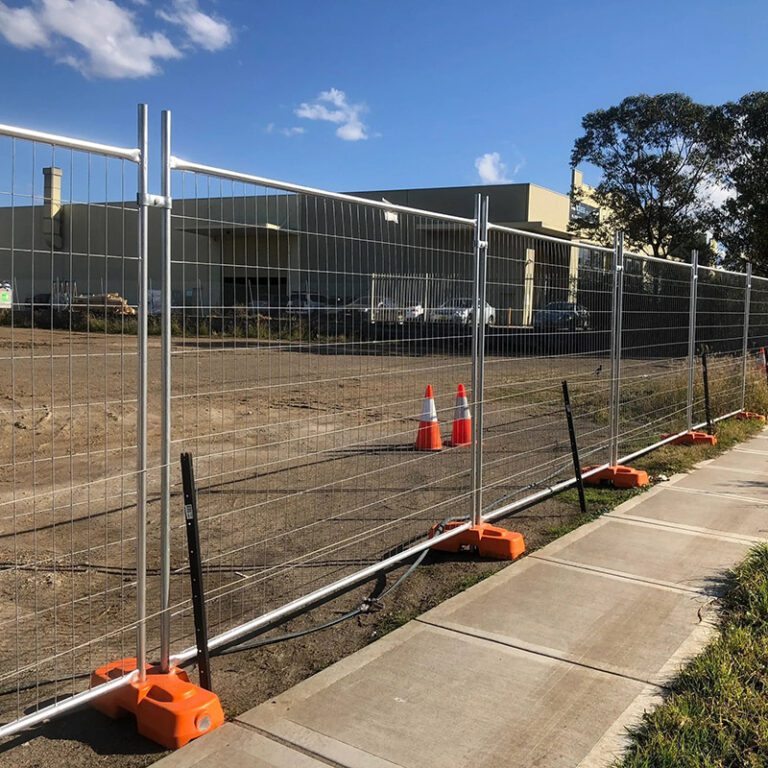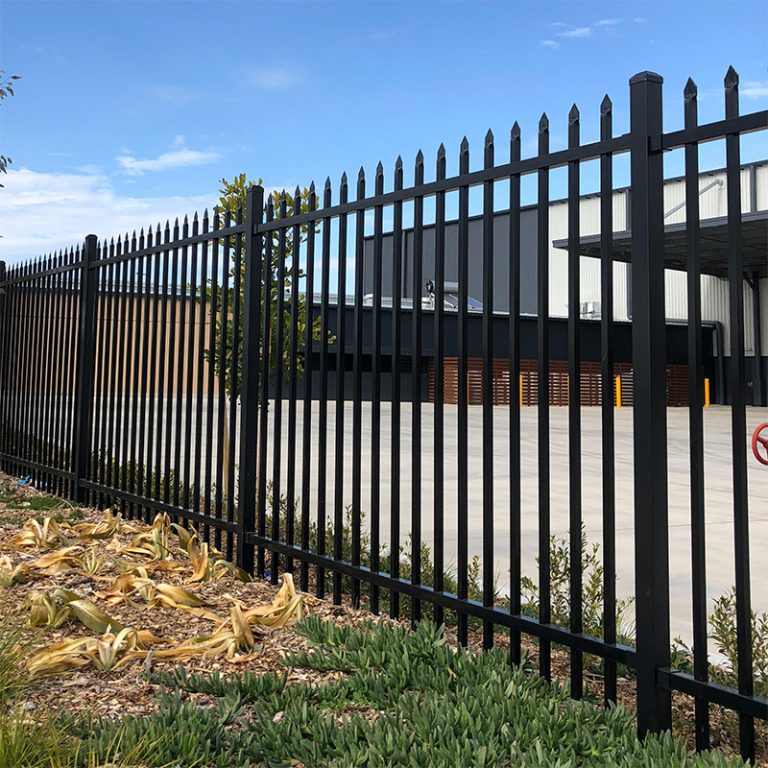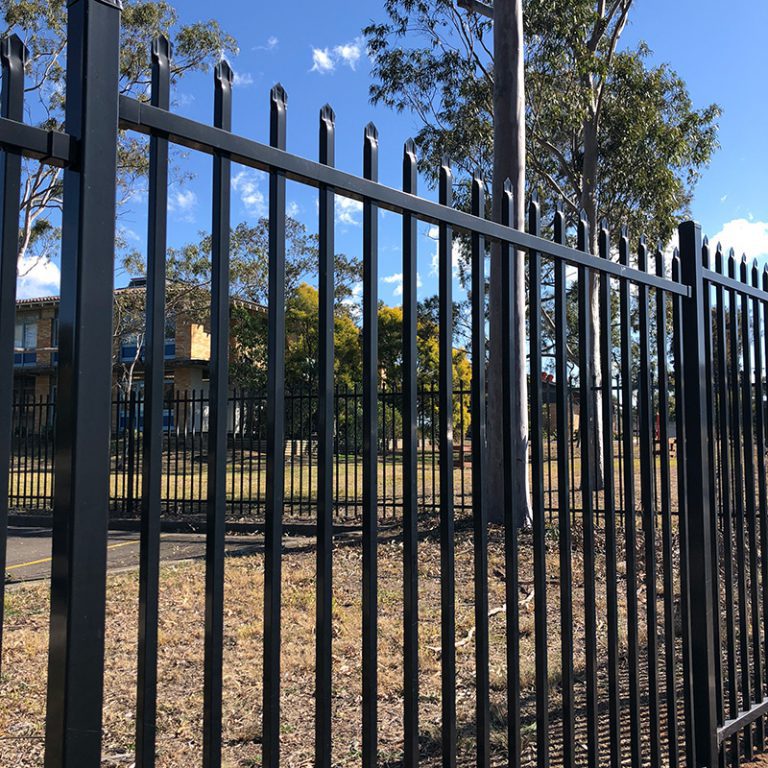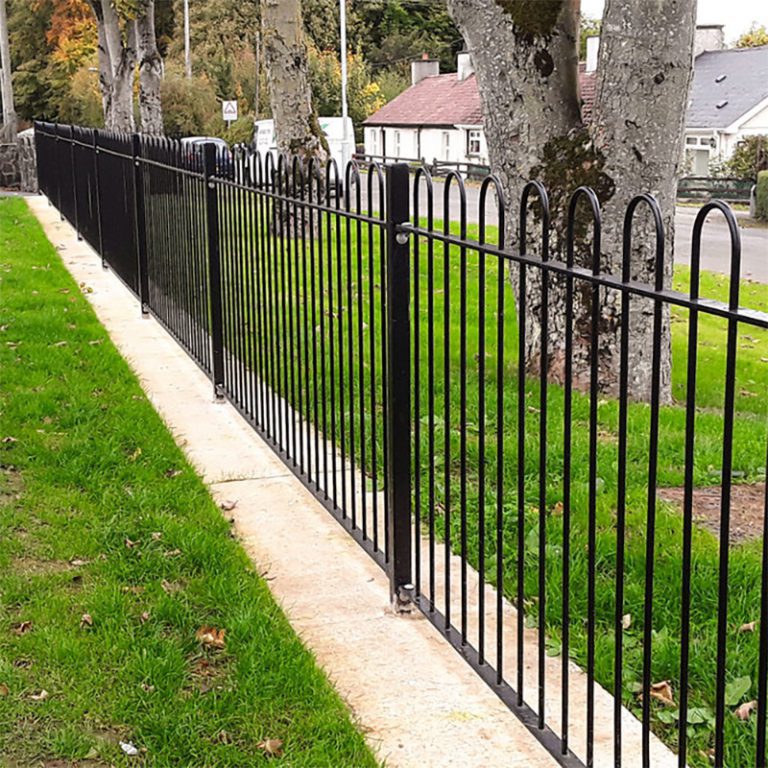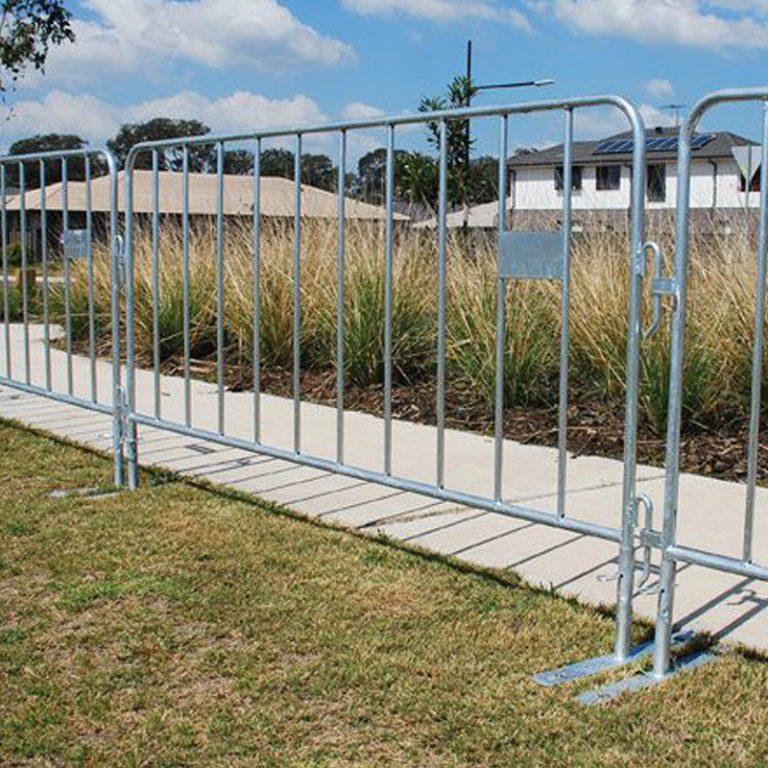Crowd control barriers are indispensable tools for organizing public spaces, directing pedestrian traffic, and ensuring safety at events ranging from concerts to construction zones. These structures, often referred to as barricades or fencing systems, are engineered to withstand environmental stressors and human interaction while maintaining order. This guide explores the diverse categories of crowd control barriers, their unique features, and their applications across industries. By understanding these distinctions, event planners, facility managers, and safety professionals can make informed decisions to optimize crowd management strategies.
1. Temporary Fencing Barriers:
Temporary fencing barriers are widely recognized for their versatility and ease of deployment. They are particularly popular in scenarios where boundaries need to be established quickly and with minimal disruption. These barriers are often used at concerts, festivals, construction sites, and emergency zones, where a rapid response is crucial for safety and crowd management. Their design focuses on robustness, portability, and the ability to adapt to changing conditions. Temporary fencing can be subdivided into several types, each with its own unique features and benefits.
1.1 Steel Barricades:
Steel barricades are sturdy and durable crowd control barriers made of steel pipes or rails. They provide excellent crowd management and control in various scenarios, including concerts, parades, and construction sites. The interlocking design allows easy installation and customization of layouts to suit specific needs. Steel barricades, equipped with accessories such as signage panels or reflective tape for increased visibility during nighttime events, ensure high visibility and effective crowd control.
- Material & Design: Fabricated from galvanized steel tubing or powder-coated rails, steel barricades prioritize durability and load-bearing capacity. Their interlocking mechanisms allow for rapid assembly into continuous lines or serpentine configurations.
- Applications: Ideal for high-traffic environments like music festivals, sports stadiums, and construction sites where vandalism or accidental impact is a concern.
- Enhancements: Optional add-ons include anti-climb mesh panels, reflective striping for nighttime visibility, and custom-branded signage for event promotion or safety messaging.
1.2. Plastic Barricades:
Plastic barricades are lightweight and portable alternatives to steel barricades. They are typically made of high-density polyethylene (HDPE) and offer flexibility in terms of customization and layout configurations. Plastic barricades are weather-resistant, making them suitable for outdoor events. They are easy to handle and transport, making them ideal for temporary crowd control needs. These barricades are commonly used in marathons, trade shows, and public gatherings.
- Material & Design: Constructed from high-density polyethylene (HDPE), these barriers are UV-resistant, rust-proof, and lightweight. Their hollow-core design reduces weight while maintaining structural integrity.
- Applications: Suited for marathons, outdoor exhibitions, and retail environments where frequent repositioning is required.
- Advantages: Non-conductive properties make them safe near electrical hazards. Interlocking bases or weighted feet enhance stability without permanent anchoring.
1.3. Water-Filled Barriers:
Water-filled barriers provide a unique crowd control solution that combines portability with stability. These barriers are made of durable plastic and can be filled with water or sand to increase stability. The water-filled design offers a higher level of safety by absorbing impact and reducing the risk of injury. Water-filled barriers are commonly used in road construction, outdoor festivals, and sporting events.
- Material & Design: Molded from reinforced polyethylene, these barriers feature internal chambers that can be filled with water or sand. The liquid ballast lowers the center of gravity, providing exceptional resistance to tipping.
- Applications: Commonly used in highway construction, outdoor festivals, and vehicle checkpoints where impact absorption is critical.
- Safety Features: Rounded edges minimize injury risks, while bright-colored surfaces improve visibility. Some models include integrated handles for effortless relocation.
2. Retractable Belt Barriers:
Retractable belt barriers have become a cornerstone of indoor crowd management, offering a sleek and efficient method of controlling pedestrian flow in areas such as airports, museums, retail stores, and banks. These barriers are designed to be both aesthetically pleasing and highly functional, contributing to a professional environment while ensuring that access remains regulated and secure.
2.1. Classic Retractable Belt Barriers:
The classic retractable belt barriers consist of a metal post with a retractable belt cassette. Classic retractable belt barriers, widely used in airports, hotels, theaters, and banks, can be customized with branded signage or safety messages. They are available in various belt lengths and colors to suit different applications.
- Design: Comprising a steel or aluminum stanchion with a spring-loaded belt cassette, these barriers deploy belts up to 10 feet long. Belts are available in nylon, polyester, or vinyl, with options for printed logos or cautionary text.
- Applications: Airports, banks, and ticketed venues benefit from their compact footprint and ability to adapt to fluctuating crowd sizes.
- Customization: Stanchions can be weighted with sandbags or bolted to floors for permanent installations.
2.2. Wall-Mounted Retractable Belt Barriers:
The wall-mounted retractable belt barriers offer space-saving crowd control solutions. Wall-mounted retractable belt barriers offer effective crowd management in corridors, entrances, and restricted areas where floor-mounted barriers may not be suitable, so wall-mounted retractable belt barriers are popular in museums, galleries, and exhibition halls.
- Design: These space-saving units attach directly to walls or pillars, eliminating the need for freestanding posts. Belt retractors are housed in slim, tamper-proof casings.
- Applications: Ideal for corridors, museum exhibits, and retail store entrances where floor space is limited.
- Flexibility: Systems can be configured as single belts or multi-lane queues with parallel retractors.
2.3. Post and Rope Barriers:
Post and rope barriers provide an elegant and sophisticated crowd control solution suitable for upscale events such as red carpet events, weddings, and VIP areas. These barriers consist of stanchions (upright posts) connected by velvet ropes. Post and rope barriers are highly customizable, with a variety of stanchion designs and rope colors available. They not only control crowds but also add a touch of luxury and exclusivity to event settings.
- Design: Combining decorative stanchions (brass, stainless steel, or powder-coated finishes) with velvet or rope chains, these barriers blend functionality with elegance.
- Applications: Red-carpet events, hotel lobbies, and upscale retail spaces use them to create exclusive zones without obstructing sightlines.
- Accessories: Custom finials (e.g., logos, acrylic globes) and LED-lit stanchions enhance branding and visibility.
3. Portable Crowd Control Barriers:
The need for flexibility in crowd management has led to the development of portable crowd control barriers, which are designed to be easily transported and rapidly deployed in a variety of situations. These barriers are particularly useful in environments where the layout may change frequently, or where temporary boundaries need to be established quickly in response to evolving circumstances. Portable barriers are engineered with practicality in mind, ensuring that they can be set up and dismantled with minimal effort while still providing robust protection and guidance.
3.1. Expandable Barriers:
Expandable barriers, also known as concertina barriers, are lightweight and compact crowd control solutions. They feature a concertina-style design that allows them to expand and retract as needed. Expandable barriers, commonly used in construction sites, airports, and temporary work zones, are easy to set up and can be connected to create longer barriers or cordoned-off areas.
- Design: Foldable steel or polypropylene panels connected by hinges form accordion-style barriers. Panels lock into place when expanded and collapse for compact storage.
- Applications: Construction sites, airport security lanes, and disaster response scenarios require quick perimeter setup.
- Durability: Galvanized steel models resist corrosion, while polypropylene variants are ideal for indoor use.
3.2. Mesh Panel Barriers
- Design: Lightweight steel frames with welded mesh infill provide transparency and airflow. Panels connect via hooks or clamps to form continuous barriers.
- Applications: Crowd management at parades, public protests, or outdoor markets where visibility and ventilation are priorities.
- Security: Anti-cut mesh and lockable joints deter tampering.
4. Pedestrian Control Barriers:
Managing the movement of pedestrians, especially in high-traffic areas or zones with restricted access, requires specialized control mechanisms that not only ensure orderly passage but also enhance overall security. Pedestrian control barriers are designed to regulate access, direct foot traffic, and prevent overcrowding in sensitive areas. These systems are particularly critical in transportation hubs, sports stadiums, amusement parks, and public facilities where managing the flow of people is a constant challenge.
4.1. Tripod Turnstiles:
Tripod turnstiles are compact and commonly used in transportation hubs, stadiums, and amusement parks. They consist of three rotating arms that allow one person to pass through at a time. Tripod turnstiles facilitate entry control and can be integrated with access control systems, such as ticket validation or ID card scanning, to enhance security.
- Design: Three-arm rotating gates mounted on a central pivot. Each rotation allows single-person entry, often synchronized with ticket scanners or RFID readers.
- Applications: Subway stations, office buildings, and amusement parks use them to prevent tailgating.
4.2. Waist-High Turnstiles:
Waist-high turnstiles offer increased security and access control compared to tripod turnstiles. These barriers feature a horizontal arm that can rotate vertically to allow one person to pass through at a time. Waist-high turnstiles, equipped with biometric authentication options like fingerprint or facial recognition, so enhance security in subway stations, office buildings, and high-security facilities.
- Design: Horizontal stainless steel arms rotate vertically, offering stricter access control. Compatible with biometric scanners, facial recognition, or card readers.
- Applications: High-security facilities, data centers, and government buildings.
4.3. Swing Gates:
The swing gates provide a seamless and hands-free pedestrian control solution. Swing gates, commonly found in hospitals, shopping malls, and public buildings, so provide easy access for people with disabilities or those carrying bulky items. They have two modes of operation, either manually or automatically using sensors.
- Design: Full-height or waist-high gates that swing open manually or via automated sensors. Some models include glass partitions or emergency breakaway features.
- Applications: Hospitals, shopping centers, and accessible entrances prioritize ADA compliance and smooth traffic flow.
5. Analysis and Comparison:
When choosing crowd control barriers, it is necessary to consider factors such as durability and lifespan, ease of installation and transportation, customization options, and cost-effectiveness. Additionally, event organizers should take into account the type of event, venue, and expected crowd size.
5.1. Durability:
When considering the durability and lifespan of a barrier, it is important to assess the environmental conditions in which the barrier will be used. For instance, steel barricades, with their robust construction, excel in high-impact situations and harsh weather conditions, ensuring long-term performance even in challenging settings. Plastic barricades, while lightweight, are engineered to resist environmental degradation, making them a dependable choice for outdoor events that demand both resilience and ease of handling. Similarly, water-filled barriers are designed to provide immediate stability and impact absorption, attributes that are essential in high-risk areas such as road construction zones or emergency response sites.
5.2. Installation:
Ease of installation and transportation is another critical factor. Retractable belt barriers, whether classic or wall-mounted, are designed for quick setup and seamless integration into indoor environments, minimizing downtime and allowing venues to maintain an organized appearance. Portable crowd control barriers, including expandable and concertina models, are engineered for rapid deployment, making them ideal for situations where conditions change rapidly or where barriers need to be moved between locations. The user-friendly nature of these systems reduces the burden on event staff and security personnel, ensuring that crowd management strategies can be executed efficiently.
5.3. Cost-effectiveness:
Cost-effectiveness is an important consideration, particularly for organizations that manage multiple events or large-scale operations. While the initial investment in high-quality crowd control barriers may be significant, the long-term benefits—such as durability, ease of maintenance, and adaptability—can provide substantial cost savings over time. A well-chosen barrier system reduces the likelihood of accidents, minimizes potential liabilities, and enhances the overall efficiency of event operations, making it a worthwhile investment in public safety.
5.4 Application Scenarios
Application scenarios further highlight the diverse nature of crowd control solutions. Temporary fencing barriers, such as steel, plastic, and water-filled barricades, are commonly deployed at concerts, festivals, construction sites, and emergency zones, where rapid setup and robust protection are paramount. Retractable belt barriers are best suited for indoor environments, including airports, museums, and retail stores, where space is at a premium and aesthetic considerations are important. Portable barriers offer the flexibility required in temporary work zones and dynamic emergency situations, while pedestrian control barriers are essential in high-traffic areas such as transportation hubs, stadiums, and public facilities.
Conclusion:
Crowd control barriers are indispensable tools in the quest to maintain order and ensure public safety in a wide array of environments. From the rugged reliability of temporary fencing solutions to the sleek functionality of retractable belt systems, the options available today provide tailored solutions for almost any scenario. The detailed exploration of steel, plastic, and water-filled temporary barriers reveals the importance of selecting materials and designs that align with the specific demands of outdoor events, construction sites, and emergency situations. Similarly, the examination of retractable belt barriers underscores the value of integrating modern technology with aesthetic design, enabling secure and organized indoor environments that range from airports to upscale event venues.
As a specialist metal fence manufacturer, Fence Depot offers a full range of certified crowd control solutions. Contact our experts to design a barrier system that suits your needs.

